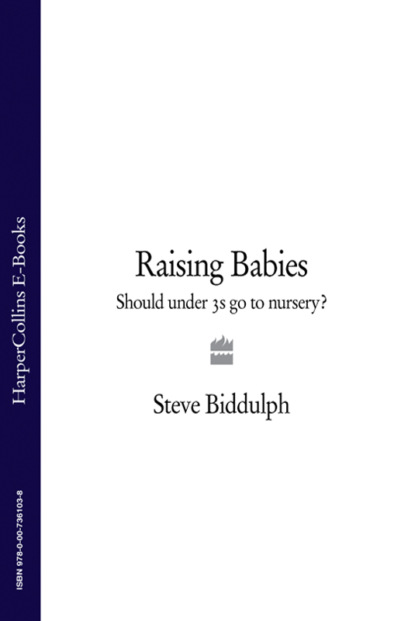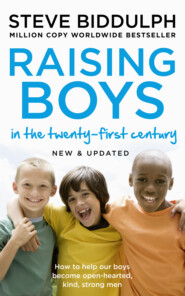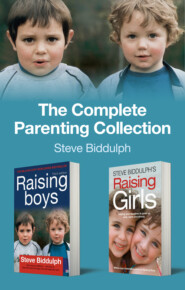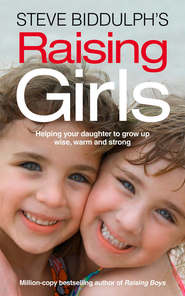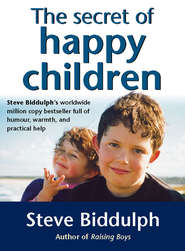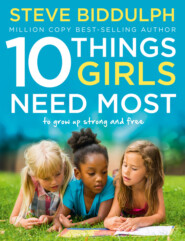По всем вопросам обращайтесь на: info@litportal.ru
(©) 2003-2024.
✖
Raising Babies: Should under 3s go to nursery?
Автор
Год написания книги
2019
Настройки чтения
Размер шрифта
Высота строк
Поля
Home-raised children
Apart from slammers and sliders, there is still a large group of parents – around 60 per cent – whose children never see the inside of a day nursery, and who move from family home, spiced up with time in the care of grandparents, relatives, friends or childminders, directly to pre-school and full-time school. It is interesting to compare countries in this regard. In Germany and Italy this home-rearing group is large – about 90 per cent, in Sweden around 50 per cent, but in the US only 35 per cent. The variations between countries indicate different values in those cultures but, even allowing for these differences, in every developed country a significant number of parents – usually mothers, but increasingly also fathers – forego employment opportunities, interrupt their personal goals, and direct their energies towards home, children and community, at least for this short period of their lives, and would not have it any other way. When interviewed, these parents invariably say they would like their role recognized and valued more, and would also like their eventual return to work to be made easier by flexible work and retraining support. They also argue strongly for paid parental leave, so that the valuable service they provide in parenting is rewarded by the larger community.
These three lifestyles – slamming, sliding, or home-rearing – are the options parents of the under-threes can choose between. You too have these choices – or should do. Many of us in the 1960s and 1970s fought hard to win the right for women to have careers, and this fight still continues. But increasingly now we have to fight for the right of parents – of both sexes – to step out of paid careers if they choose, in order to properly care for their children; and this will certainly be demanded by future generations. We have a right to parent, and children have a right to receive full-time love.
Nursery uptake and social class
It is interesting to note that attitudes to nursery care are different in different social groups across the UK. The Sure Start programme – the government’s system of parent support centres and home visitors – has been acclaimed worldwide for providing help at the most beneficial and crucial time. Sure Start includes a range of services, among them the offering of childcare nursery places. Yet in the traditional blue-collar regions of the UK, organizers often find it almost impossible to get parents to take up the nursery places available. A centre director told the Guardian newspaper:
‘Parents round here don’t want to use day nurseries – they don’t want to leave their children with people they don’t know. This is their precious child and they don’t want to hand them over to strangers. We’re registered and inspected by OFSTED and we have qualifications, but they don’t trust all that. We’re attempting a big cultural shift.’
(#litres_trial_promo)
The article went on to report that:
‘On the other side of Birmingham, on another large housing estate, Chelmsley Wood, the mothers at the Sure Start project have very strong views on the subject. As one of the first projects of its kind, it runs the services parents asked for – a drop-in centre, programmes to support parents, encouraging them to read and sing nursery rhymes with their children – but it has no daycare. One of the mothers, Kate, is planning to go back to work, but only when her son is at school: “Tom is my only child, he’s so precious. I’m frightened and not sure about daycare. It would worry me too much, that he was spending too much time with other people.”’
Another mother, Clare, went back to work after three months with her first child. That was eight years ago, and this time around she’s determined to do it differently: ‘I missed out on so much and I said I would never do that again. I will wait until my children are in full-time school.’
Blue-collar parents are much more reluctant to use nurseries than the middle classes. So are immigrant parents and refugees. A higher value is placed on family cohesion among the poor, and often it is all that stands between them and annihilation. Many US daycare centres now deliberately recruit staff from Hispanic backgrounds because these young women tend to be more loving, tender, patient and good humoured – more natural, and good with children. Parents prefer them. White carers tended to be more self-centred, less caring and colder. Are those cultures that are closer to an agrarian, family-oriented way of life the last receptacles of the ability to love children? What does that say for where we are heading?
Having it all?
The media must accept a lot of the responsibility for shaping the attitudes and beliefs of young parents as to what is normal: ‘You can have it all’ is a very advertiser-friendly editorial line. A recent magazine article on childcare choices featured photos of unusually good-looking mothers with their babies at the beach. One of the women – a fashion model – told the interviewer: ‘I stayed home for the first six months. Then I put him in a nursery full-time and returned to work. I really needed my independence.’ It was a strange choice of words – a mother is not dependent on her child. (Independence is what you get when you leave your parents – not when you leave your child!) Perhaps what she really meant was ‘I really needed my freedom.’ To be free of this demanding little person, to focus on me again. Except, put that way, it doesn’t sound quite so edifying.
Several years ago one of the largest bookstore chains in the UK asked me to write a book on ‘Choosing Childcare – deciding what is right for you’. I was excited about this idea since it was a chance to put across some of the concerns you have been reading about here. I wrote back to them just to be sure. Were they aware that I believed most alternatives to parental care of babies to be seriously second-rate? That I would not recommend nursery care or nannies for children under the age of two? No, it turned out they had not read any of my books, though they had sold millions of them! You could hear the back-pedalling all the way from Australia. They wanted to sell books that made people feel good whatever they chose, and perhaps I wasn’t their man. So, with courtesy and warmth, we parted ways! I guess they found somebody else.
What do you prefer?
Dr Catherine Hakim, a researcher at the London School of Economics, has attracted worldwide attention for some new thinking about the whole question of mothers and paid work.
(#litres_trial_promo) Hakim came to the enlightened realization that all of the statistics about childcare that one ever reads were based on what people were doing. But what if they instead asked people what they would prefer to do? Asking this question revealed a completely different picture. Up until that point, governments had made a sweeping assumption – all mothers (and fathers) want to work, and like doing so. In a way, this was as stereotyped as the 1950s idea that all mothers liked staying at home and cooking scones. When people were interviewed about their actual preferences, Hakim found three distinct groups:
1 Home-centred women who give priority to children and family life, and prefer not to do paid work at all. This group makes up about 20 per cent of women in the UK. (And probably of men too, if they were given the choice.)
2 Work-centred women who give priority to careers. Again, this group makes up about 20 per cent.
3 Adaptive women who combine work and family life, but saw work as being something to fit around their family life, rather than the reverse. This group makes up about 60 per cent.
(The focus solely on work and family can be limiting here: most women are also involved in activism, education, and other pursuits that define their lives more broadly than these two specific roles. SB)
Hakim argued that by basing policies on the work-centred 20 per cent, just because they conformed to certain feminist expectations, the home-centred group were disadvantaged, as were the adaptive women, who often preferred shorter hours and other reforms that made it possible to meet the needs of children. This argument had huge implications for governments – for instance, the funds and tax breaks poured into subsidizing nursery care might be better spent on subsidizing those parents who wanted shorter working hours, or simply wish to stay at home and care for their children – and could do so more cheaply and better than nurseries could manage.
Hakim’s work has strong statistical support, and has galvanized discussion, since it allows for more diversity of choice, and is patently more realistic. It also brought to the fore some of the real tensions current in our lives. For instance, at one time it was male managers who did not understand the needs of women in the workforce. Staff I worked with recently at a large university told me a sad story of how the women on the academic staff had eagerly awaited a woman vice-chancellor, who would understand their needs for maternity leave, leave to care for sick children and flexible work hours, only to find that the woman who got the job was far more judgemental and less compassionate than her male predecessor. Their situation went into reverse, and 20 years of gradual gains were wiped out in a year.
Many magazines and press articles have described the ‘Mummy Wars’, in which fierce divisions exist between stay-at-home mothers and mothers in the paid workforce. It’s likely that both groups secretly envy some of the options enjoyed by the other. Hakim’s research would suggest that a large proportion of us would like the benefits of a timely return to work, but not at the expense of our children. It doesn’t seem too hard for employers and governments to meet this reasonable demand. If we also add an availability of fathers to do their part in the early years, then the problem is not insurmountable.
For a young couple contemplating starting a family, or with a new baby at home, it is important to do some hard thinking. We human beings are easily confused, and very much herd creatures. We do what everyone else does. We accept platitudes that really don’t make sense, but sound good. We are told ‘what’s good for you is good for them’. Also our own background has a big effect. If we don’t have a strong experience of parental love in our own childhood, we might not know what we are losing.
There is intense and intelligent discussion going on in the UK today about these choices. Parents in the past have often been fobbed off with bland reassurance, as if parenthood somehow softens the brain, but we are now more educated, more questioning and more networked than ever. And, fortunately, the answers are now emerging to address our concerns. In the following chapters, we will look at this in depth. The big question in choosing between slamming, sliding or staying at home, is: what is best from a child’s point of view?
A woman who asks tough questions
The scene is a large national conference of women lawyers in Sydney, Australia, and the topic is a popular one – combining parenthood with a career. The speakers are all of one mind: ‘There is still much work to be done to overcome discrimination. It is tough being a professional woman and a mother as well.’ The convenor, thanking the morning’s speakers, adds her own exhortation: ‘Don’t let anyone tell you that you shouldn’t be working.’
Then, unexpectedly, a hand goes up in the audience. Heads turned to watch as a tall, bespectacled young woman is handed a microphone. ‘No one has ever told me not to work,’ she says, in a clear and thoughtful voice. ‘These days all the pressure we get is to work full-time and to have a successful career.’ She pauses to allow this to sink in. ‘What no one talks about is taking time out to care for our children. That’s the message young women never hear today.’ You could hear a pin drop.
The woman’s name is Cathleen Sherry. She is, in her mid-thirties, already a tenured lecturer in law. Sherry is unusual in her profession, because with a family of three young children, she has reduced her workload by two-thirds, including taking several years off work completely. In Australia, she is a voice of the generational shift within feminism. Since that moment at the conference, she has featured in many media stories, and has written a series of articles of her own. She is saying, loud and clear: ‘What about the children?’
Sherry had come through a conversion experience of her own. When preparing to start her family, she sought out older women lawyers whom she knew were combining family and full-time work. She assumed that she could find role models and mentors to show her how it was done. Instead, she got a huge shock. When these women opened up to her, their lives sounded like a nightmare. They told stories of putting weeks-old babies into daycare, battling exhaustion, failing to acquire mothering skills, having problems with breastfeeding, feeling miserable and conflicted. Some of the older women told her of destroyed marriages and adolescent children with serious problems. A few of her informants did their best to put a positive spin on it all, but others were frankly shattered. As Sherry said, ‘There was no one that I spoke with who gave me the feeling – this is how I would want my life to be.’ The blueprint she was looking for – happily combining family and full-time work – did not exist, at least not in the world of the law.
There was more. As a rights lawyer, often advocating for children in the courtroom, Sherry saw a contradiction. That the sacred cow of the 1990s, a woman’s right to do what she wanted, was a logical fallacy. The needs of every person in the family and community had to be considered together, and balanced against each other. She told one interviewer:
‘No one has an absolute right to a career – men or women. If you choose to have children, your major responsibility is to care for them properly, and if that affects your career, it affects your career. But no one wants to acknowledge this reality…There is more than a dollop of hypocrisy in the fact that men who spend excessive hours in the workplace and little time with their children are considered substandard parents and yet women who do the same are considered “supermums”.’
Sherry is tough on men too.
‘Childcare allows men to avoid responsibility for their children. Women have to pay for others to look after their children because men aren’t willing to cut back on their work hours to do their share of the parenting. If women go back to work, it should be men, not children, who alter their lives accordingly.’
Cathleen Sherry is a nuanced kind of feminist who thinks children have rights too, and she knows that there is more to life than what money can buy. She is also a strong believer in governments providing proper support to those vulnerable women – especially single mothers – who need financial support to care for their children properly. She does not see it as just that poorer women should be forced into the workforce, to the cost of their children’s nurture. As she points out, in most countries the law only requires a child care centre to have one carer for every five babies.
‘It is like having a mother on her own caring for quintuplets. One baby wakes and needs to be fed. Another is crying, needing comfort but has to wait; they all have to wait their turn for comfort, affection, cuddles, – all the things that babies need…In maternity hospitals, it is no longer the done thing to have newborn babies lined up in a nursery with a couple of nurses looking after them. That is seen as terrible. Mothers are strongly persuaded to have their babies with them 24 hours a day. Yet six weeks later is okay to put ten of them in a nursery with just two carers. It doesn’t make sense.’
In a nutshell
The statistics about nursery-care usage are deceiving unless analysed properly.
Slammers – who put their babies straight into full-time daycare – make up less than 5 per cent of the UK’s parents.
Sliders – who gradually use some care, often not starting until three years of age and often part-time – make up about 35 per cent.
Those who use no group care at all, only themselves supplemented by grandparents and friends occasionally, make up around 60 per cent. Prominent in this sector are blue-collar parents and ethnic minorities.
Catherine Hakim believes government policies should meet the needs of adaptive and stay-at-home parents, while at present they only serve the work-driven 20 per cent. She’s right.
The big question is – what is best for the child?
3 Does nursery harm under-threes? (#ulink_798a7c5c-5297-5a3f-b870-6140a301ef49)
The daycare debate first began to really heat up about thirty years ago. As the use of day nurseries for very young children increased in the 1970s, child development experts began to be concerned about what this kind of care might do to the child. The effects of separation from parents in wartime had become a major area of study, and was already leading to changes in how children were treated – for instance, it was realized that children in hospitals needed to have their parents visit daily or, even better, stay with them, while in the past they had been actively prevented from visiting more than once a week. Dr John Bowlby’s research into ‘attachment’ problems in children separated from their parents was now cited to suggest that the bond between mother and child, known to be necessary to the healthy development of children, was endangered if a mother entered full-time work too soon, and that children in nurseries would not develop well without the secure and loving input that a parent or family member provides.
(#litres_trial_promo)
Vested interests
At the same time, a new industry – and a new profession – was mushrooming around the demand for well-conducted nurseries, and ‘Early Childhood’ departments sprang up in universities and technical colleges, aimed at training childcare directors and teachers. These departments were well funded by governments on both the left and right, who saw the tax advantages of having everyone in the workforce, with the additional advantage of appearing progressive and woman-friendly at the same time.
These departments were often set up in universities that already had psychology departments with child development units within them, which trained psychologists and child welfare workers. These parallel faculties often found themselves preaching opposite points of view – though both were committed to the well-being of children, they had different ways of arriving there. A common statement from the Early Childhood school of thought was the fatalistic one that nursery care ‘was here to stay’ and that therefore ‘we have to do what we can to make it as good as possible’. The opposing camp felt that parents must be alerted to the drawbacks of nursery care and influenced not to abandon their children in the rush towards self-obsession that gave them the label of the ‘Me generation’. Clearly, there was some truth on both sides, but the emotive and politicized situation did not make for objective research.





